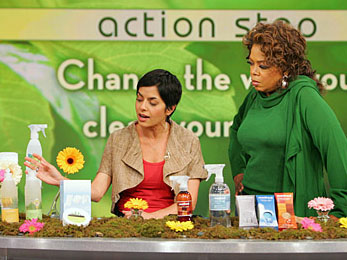Turtuga Blanku interviews Simran Sethi
I am promoting the use of renewable energy through this website and my music. But there are a lot of other people out there also doing something in their own special way to contribute to solving environmental problems. I ask each interviewee only five questions.

We start out with Simran Sethi, an award-winning eco-expert and freelance journalist, who is creator and host of Sundance Channel's The Good Fight, a sustainable business contributor for CNBC News and a regular columnist for The Huffington Post.
1) Save the earth…why?
Today, when we hear the word "environment," most people think of the rainforests, or vast, empty mountains and deserts—we think of nature. But it wasn't until the 1950s that "environment" became synonymous with ecology. Before that, it simply meant whatever you were surrounded by. So, your environment was your neighborhood, your backyard, your family and friends. It's important to remember that when we talk about "saving the earth," we're not just talking about polar bears or rainforests. We're talking about people.
The web series I created for Sundance Channel, "The Good Fight", explores environmental rights as civil rights. Every person deserves to have access to clean drinking water, non-toxic air, nutritious food and a strong, healthy community. For me, environmentalism is about protecting these rights for all people, whether they live in the shadow of a West Virginia strip mine or down the street from a toxic chemical plant in East LA.
2) What, in your opinion would be the most realistic way to solve the climate problems we are facing?
There are countless ways to get involved—just start with whatever you're passionate about. If you love fashion, the ecofashion movement is pioneering organic cotton, vintage and recycled fabrics, and fair labor standards. If you're an architect, you can get involved in green building or Architecture for Humanity. If you're a mom or a dad, you can find out whether your children's toys are made with lead paint, and use non-toxic cleaners in your home. If you love to eat, you can explore the impact of your daily meals, and find a farmer's market in your area. A great point of entry is what we buy. The first step is thinking about how you can buy in a different way and the second step is thinking about how you can buy less.

Beyond the individual, grassroots level, government policy is necessary to hold industries accountable for their emissions and jump-start renewable energy industries like solar and wind. We need to keep pressuring our local and national legislators and let them know that this is a major issue that we want to see addressed, now.
3) Do you think that anyone can be -or has the personality to be- "green"?
Being "green" means paying attention, to the impact of what we consume and what we toss away. It's not limited to the people who can afford to buy Priuses, or hippies wearing hemp mumus in Berkely, California or Burlington, Vermont. As a journalist, I've met environmentalists all over the world, and they don't fit into one particular profile.
Majora Carter's organization, Sustainable South Bronx installs green roofs in the inner city. Christians for the Mountains is an evangelical organization fighting mountain top removal coal mining in West Virginia. Women in Steel, a division of the United Steelworkers Union, is leading a campaign against toys made with lead. I moderated a panel with Al Gore, a well known Democrat environmentalist, and for Treehugger radio, I interviewed Martha Marks, a member of Republicans for Environmental Protection. Each of these people may come from different backgrounds, and have slightly different values, but they've all found reasons and ways to fight for the environment.
4) How do you think music can contribute to protecting the environment?
Worldwide, I'll bet that more people listen to music than read the newspaper. Music has a great capacity to reach people on an emotional level and inspire them to act. The music industry is also a great example of how technology can offer alternatives that make it easier to "green" our everyday lives. Some artists, like Jack Johnson and Ben Harper, have produced records packaged in recycled cardboard sleeves rather than bulky plastic cases. And thanks to computers and the internet, I can buy, store and play my M.I.A. and Rihanna without wasteful packaging and shipping.
5) And finally: who would you recommend to also ask the questions you just answered?
Van Jones, Majora Carter, Omar Freilla, Clayton Thomas-Mueller and Robert Bullard.
Next up is environmental photojournalist Gary Braasch.
In Turtuga Blanku's 5Q-interview series so far:
1) Award-winning eco-expert Simran Sethi.
2) Environmental photojournalist Gary Braasch.
3) Saxophone playing physicist turned journalist Alex Hutchinson.
4) Ecocity Builders' President Richard Register.
5) M*A*S*H actor Mike Farrell.
6) Filmmaker and sound designer Velcrow Ripper.
7) Environmentalist and agricultural activist Vandana Shiva.
8) 'The World Without Us' author Alan Weisman.










